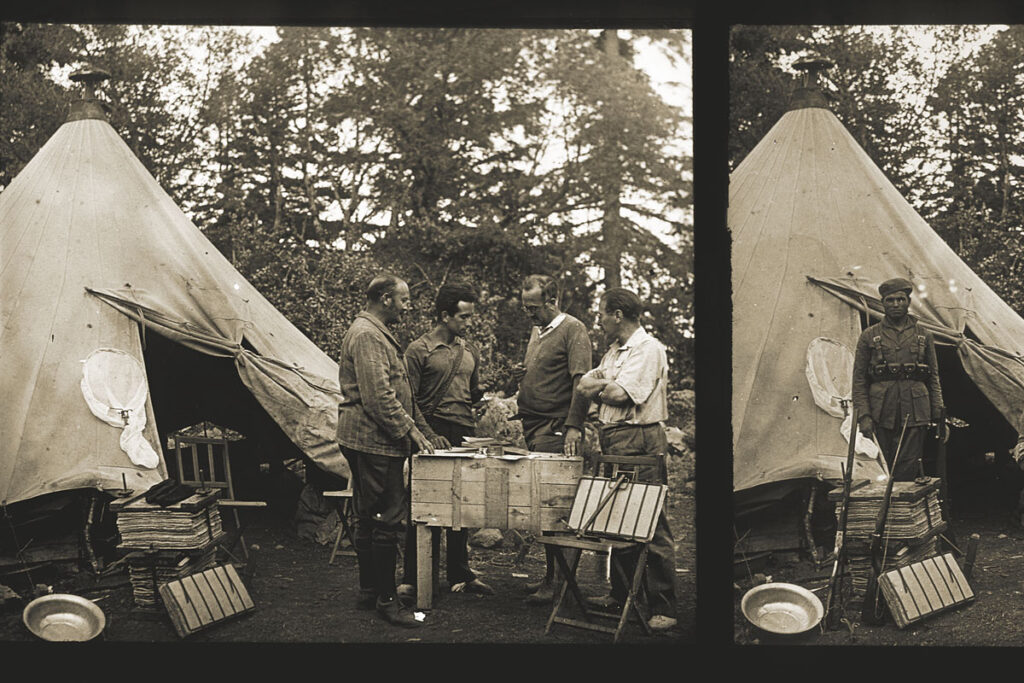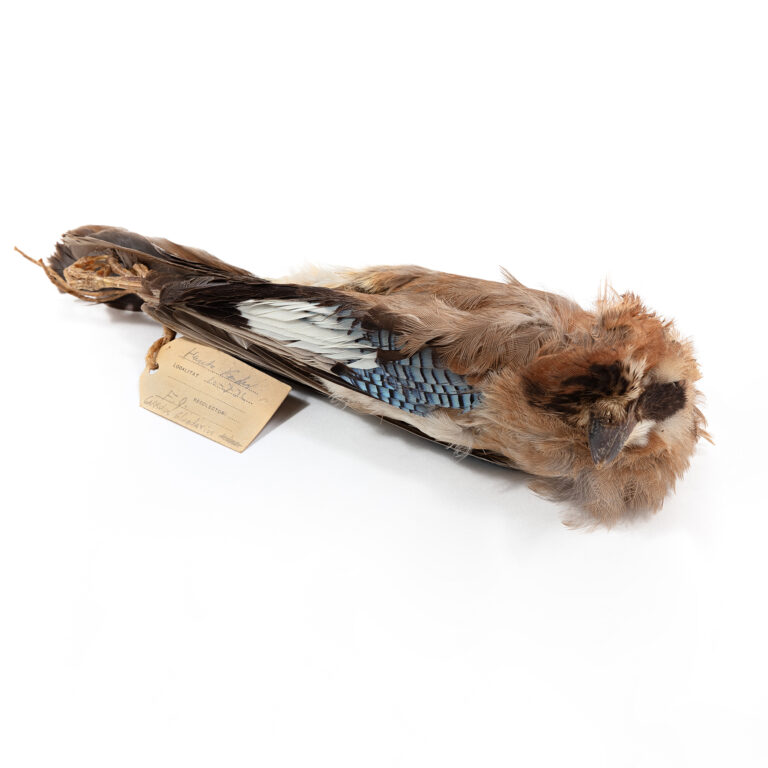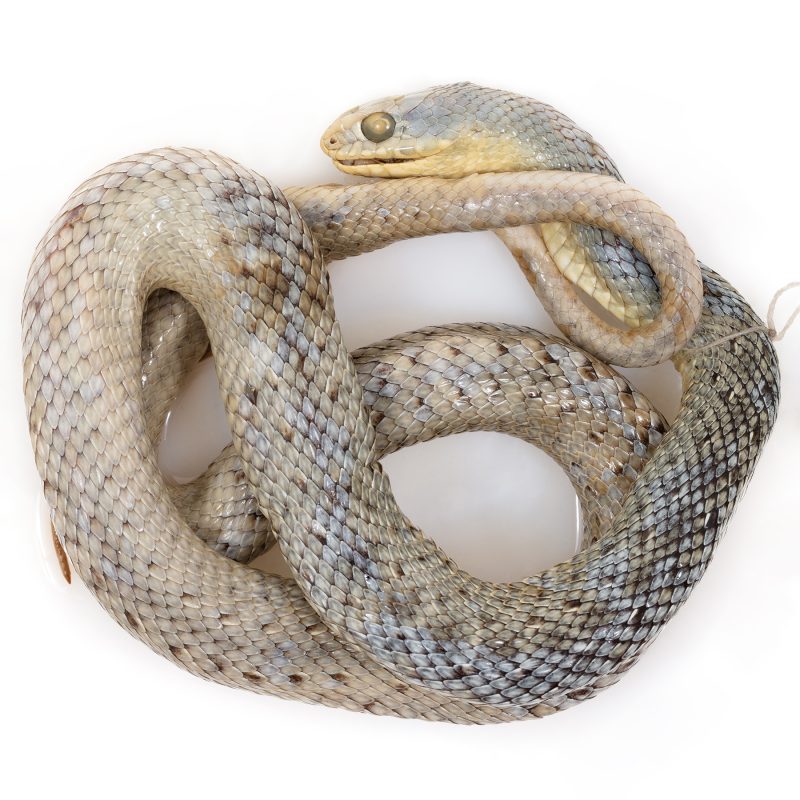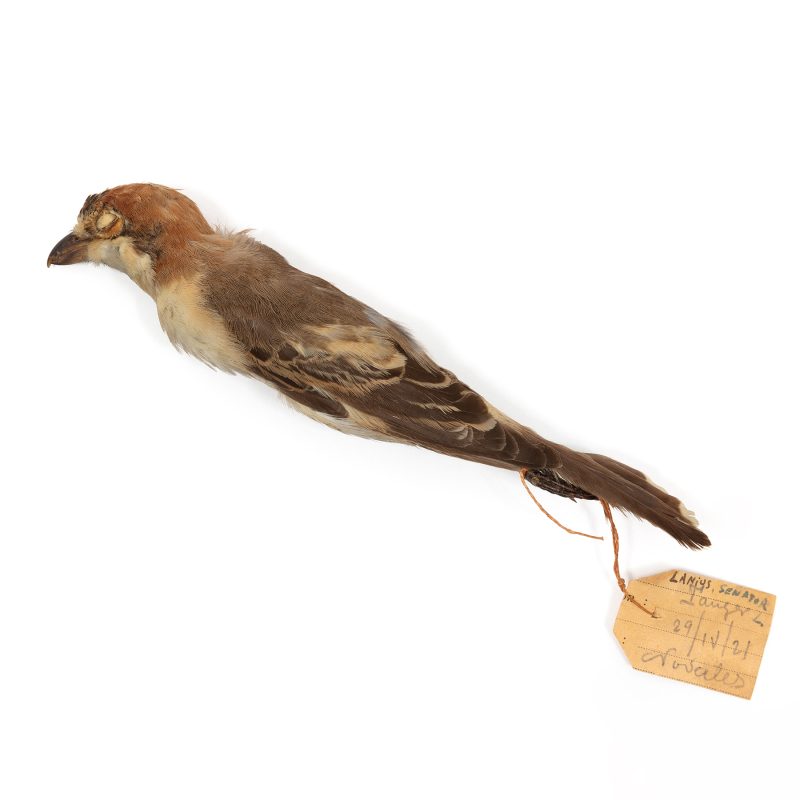Summary of results
This Jay was collected by Pius Font i Quer in Hauta al-Kasdir, on 10 July 1932, during an expedition organized by the Spanish Society of Natural History. It has not been possible to cross-reference the data relating to the specimen with the dossiers in the archives of the Natural Sciences Museum.
Chronological reconstruction of provenance
The specimen is part of a group of collections made in Morocco by Pius Font i Quer which, according to the museum’s database, total ten chordate specimens. This group is among the first six in the collection and represents 3% of the chordates from Morocco in the museum’s collection.
After the proclamation of the Second Republic, the Spanish Society of Natural History and the National Natural Sciences Museum continued to research the flora and fauna of the Spanish Protectorate. This small Great Tit was collected in the 1932 expedition organized by the Spanish Society of Natural History and led by Pius Font i Quer (1888–1964). Joan Baptista Aguilar-Amat (1882–1936) and Mariano Ferrer Bravo (1883–1936) participated as entomologists from the Natural Sciences Museum and Jaume Àngel as botanical collector. The aim was to make an exhaustive study of the region of the berber tribe of Beni Zeyyel (González and Gomis, 2007), in the north-east of Chefchaouen.
According to Font i Quer’s account (1935), they left Barcelona in June 1932 and arrived in Chefchaouen four days later, where they travelled with the help of local guides to Hauta al-Kasdir. From there they went to Bab Taza and, accompanied by local guides, climbed the Hauta al-Kasdir pass on horseback. The expedition set up camp at an altitude of 1,750 metres, on the north-east face of the Lexham summit. It was around this site that the vast majority of recorded chordate specimens were collected. The expedition lasted a month and the camp was raised on 26 July. Three days later, on 29 July, they boarded the ship in Ceuta bound for Barcelona. From the hotel bills, we know that they spent the night in Tétouan on 27 June (Hotel Victoria, owned by José Martí) and then in Chefchaouen (Hostelry of Chefchaouen), Ceuta (Majestic Hotel, owned by Demetrio Casares), and Seville (Hotel Royal).
Later that same year, 1932, Eugenio Morales Agacino (1914–2002) and Fernando Martínez de la Escalera (1910–1936) made a zoological expedition to the western part of the Protectorate.

Ref.: https://www.eltemps.cat/article/15713/laventura-africana-de-pius-font-i-quer
Estimation of provenance
Hauta al-Kasdir [sic], near Jebel Lakraa, 18/07/1932.
Possible alternative classifications
–
Complementary sources
Archives:
Arxiu NAT
Id0873 > Fitxa i documentació personal corresponent a Pius Font i Quer (24 d’agost del 1926 – 20 de juny del 1934): permisos, proposta de Comissió al Marroc, sol·licitud perquè el seu sou de funcionari municipal sigui considerat com a gratificació.
Arxiu Institut Botànic de Barcelona
AIBB/PFQ/ 19-140551
AIBB/ JCA /12
Bibliography:
Fallot, P. i Marín, A. (1937). La cordillera del Rif. Madrid: Gráficas Reunidas.
Font i Quer, P. (s. d.). Resultado de una campaña botánica en Beni Zedjel. Boletín de la Sociedad Española de Historia Natural, (35): 129-142.
González Bueno, A. (1988). Les campanyes botàniques de Pius Font i Quer al Nord d’Àfrica. Treballs de l’Institut Botànic de Barcelona, (12): 7-55.
González Bueno, A. i Gomis Blanco, A. (2007). Los territorios olvidados: Estudio histórico y diccionario de naturalistas españoles en el África hispana (1860-1936). Madrid: Doce Calles.
Madariaga, R. M. (2019). Marruecos, ese gran desconocido. Madrid: Alianza.
Muñoz Medina, J. M. (1951). Breves recorridos botánicos por el Marruecos español, I. Anales del Jardín Botánico de Madrid, (10): 341 i següents.
Puche, C. (2016-2017). L’aventura africana de Pius Font i Quer: Les exploracions al Marroc d’una figura clau de la botànica catalana. Mètode: Revista de difusió de la investigació, (92). <https://www.eltemps.cat/article/15713/laventura-africana-de-pius-font-i-quer>.



